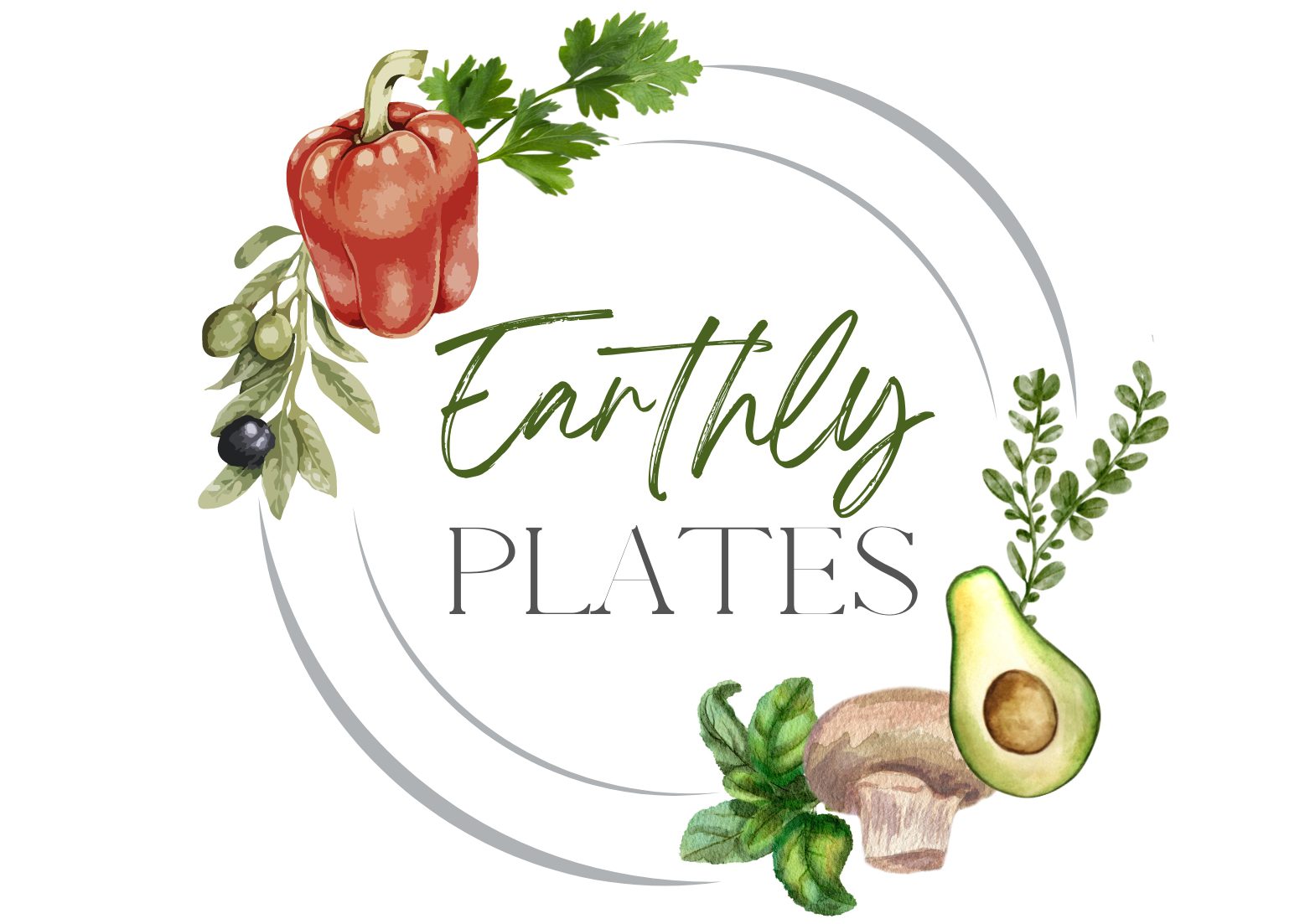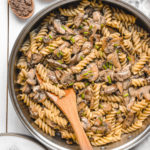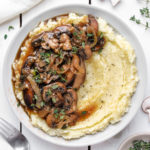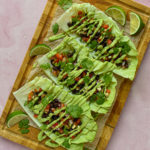In 17th century Europe, the pineapple stood as a status symbol for luxury and wealth. It was considered to be so opulent and exotic that people would often use them as a display for dinner parties until they rotted, instead of actually eating them. Fast forward to 2021, and I’m using the whole dang thing for a single dish, bowl and all.

Inspiration
I wish I could time travel. And if I could, I would travel back to the time I ate pineapple fried rice on the island of Koh Lanta in Thailand. I was staying in a house (an Airbnb that was only $16 a night!!!) on the southeast tip of the island and was told that there was a really amazing vegan restaurant on the opposite side of the island. I was determined to try it, so I had to ride on the back of a scooter through the heat of the jungle to get there. It was a trek, but when I finally made it to the restaurant, I was presented with a massive menu of vegan food. There was something about riding through the dense jungle, the heat of the day, and the sight of the turquoise ocean that just made me think “yup, pineapple fried rice is the winner right now”. It was the first time I had ever seen it served in the pineapple it was made from and I absolutely loved the idea and creativity of it. I ended up getting really sunburned that day, but my belly was happy, and whenever I think of pineapple fried rice, I think of that memory.
History of the pineapple
During the reign of King Charles II, pineapples were incredibly rare in England. At this time, pineapples had to be imported from the West Indies and very few were able to survive the voyage without spoiling. They were highly valued and commonly referred to as the “fruit of kings”, a name given to them based on the leafy crown that sits on the top of each pineapple. Their association with kingly wealth, power, and prestige dates back to 1661 when Charles had been given a pineapple by a consortium of Barbados planters and merchants who wanted him to impose a minimum price on their main export, sugar. The gift of this pineapple was one of the first-ever seen in England, which ultimately helped make the proposal by the Barbados consortium stand out and later agreed upon.
The pineapple also stood as a symbol of England’s rise and success as a maritime trading power. During this time period, England and France were fighting over their colonial hold in the West Indies. Thus, a pineapple used as a centerpiece, or one cut up and shared by the king, demonstrated and emphasized his commitment to these tropical territories overseas.
In 1680, England was finally able to grow pineapples domestically, thanks to the discovery of the heated greenhouse. As European nations were competing to categorize, propagate and exploit plants with Asian and American origins, “economic botany” took hold, as the pursuit of scientific knowledge went hand in hand with fueling national interest. The pineapple was more than just a fruit. It was a vivid symbol of power.
How to make Pineapple Fried Rice
Alright my queens and kings, time to whip out the pineapple because this royal recipe is:
Sweet
Savory
Flavorful
& Full of texture
This recipe is incredible because it incorporates so many various textures and flavor profiles. This results from a concoction of different ingredients such as garlic, shallots, cashews, peas, shredded carrots, pineapple, and raisins. All of which are mixed into fluffy rice coated in soy sauce, and madras curry powder.
Sauté the veggies
Begin by heating your neutral-flavored oil in a sauté pan over medium heat. When it’s hot, add the shallots and garlic and cook for a minute or two. Make sure to mix often to prevent any burning. After that, toss in the carrots and peas, and allow everything to cook and soften for three more minutes.
If needed, feel free to add some veggie broth at any time to help deglaze the pan and prevent the ingredients from burning or drying out. If so, slowly add a small amount in at a time, or else you will end up with sad and soggy rice.
Prep the soy sauce mixture
In a small bowl or cup, use a fork to combine the curry powder with the soy sauce. I used a madras curry powder that I found at my local Indian Spice Market, but you can use any curry powder you can find or have on hand.

Add the remaining ingredients
At this point, it’s time to complete the dish and toss everything together. Add the rice, pineapple, raisins, and cashews to the pan, followed by the soy sauce mixture. Gently fold everything to combine, and continue cooking for about 5 more minutes, to allow time for the flavors to meld.
Serving
Garnish this dish with some fresh cilantro, scallions or chives, and a spritz of lime juice. The amount of flavor and freshness that comes from the final product with an added garnish is absolutely exquisite. Try pairing it with cooked tofu for a truly royal feast!
Storing and reheating
This dish holds up surprisingly well even after a couple of days. Store any leftovers in an airtight container in the refrigerator for up to 5 days, or in the freezer for up to 3 months. Reheat it by simply adding all the ingredients back to a sauté pan over medium heat and heat until warm throughout.
If you tried out this recipe, please let me know!
And always remember that you are royalty and you hold the power!
💛 M
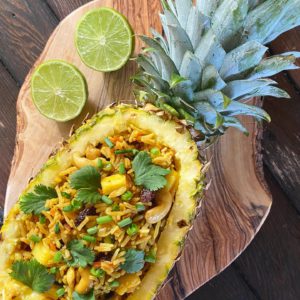
Pineapple Fried Rice
Ingredients
- 2 cups rice, precooked
- 2 shallots, minced
- 2 garlic cloves, minced
- 3 tbsp soy sauce
- 1 tbsp madras curry powder
- ⅓ cup cashews
- ½ cup peas
- ¼ cup shredded carrots
- 1 cup pineapple
- ¼ cup raisins
- 2 tbsp oil of choice
- veggie broth as needed
- cilantro/scallions for garnish
Instructions
- Heat 1 tbsp oil over medium heat and once it’s hot, add the shallots and garlic, sautéing for about a minute or two.
- Add carrots/peas and sauté for an addition 3 minutes.
- Mix curry powder and soy sauce together in a bowl.
- Add rice, pineapple, raisins and cashews, then pour the soy sauce mixture over everything, folding to combine.
- Sauté for about 5 more minutes.
- Garnish & enjoy!
Notes
- Add a small amount of veggie broth when needed to prevent the ingredients from drying out or burning on the pan.
